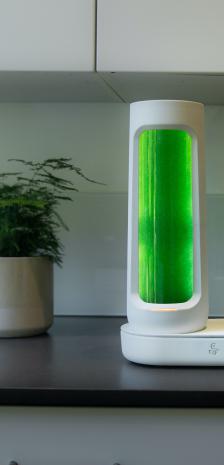
Breaking News
 As Trump sets eyes on Greenland, Europe scrambles to make plan to tackle US aggression
As Trump sets eyes on Greenland, Europe scrambles to make plan to tackle US aggression
 Corporation for Public Broadcasting votes itself out of existence
Corporation for Public Broadcasting votes itself out of existence
 John Leake on Vaccines: The Demonic Rituals to Replicate God and Mankind's New Religion...
John Leake on Vaccines: The Demonic Rituals to Replicate God and Mankind's New Religion...
 US Farmers Began Using Chemical Fertilizer After WW2. Comfrey Is a Natural Super Fertilizer
US Farmers Began Using Chemical Fertilizer After WW2. Comfrey Is a Natural Super Fertilizer
Top Tech News
 The First Production All-Solid-State Battery Is Here, And It Promises 5-Minute Charging
The First Production All-Solid-State Battery Is Here, And It Promises 5-Minute Charging
 See inside the tech-topia cities billionaires are betting big on developing...
See inside the tech-topia cities billionaires are betting big on developing...
 Storage doesn't get much cheaper than this
Storage doesn't get much cheaper than this
 Laser weapons go mobile on US Army small vehicles
Laser weapons go mobile on US Army small vehicles
 EngineAI T800: Born to Disrupt! #EngineAI #robotics #newtechnology #newproduct
EngineAI T800: Born to Disrupt! #EngineAI #robotics #newtechnology #newproduct
 This Silicon Anode Breakthrough Could Mark A Turning Point For EV Batteries [Update]
This Silicon Anode Breakthrough Could Mark A Turning Point For EV Batteries [Update]
 Travel gadget promises to dry and iron your clothes – totally hands-free
Travel gadget promises to dry and iron your clothes – totally hands-free
 Perfect Aircrete, Kitchen Ingredients.
Perfect Aircrete, Kitchen Ingredients.
 Futuristic pixel-raising display lets you feel what's onscreen
Futuristic pixel-raising display lets you feel what's onscreen
 Cutting-Edge Facility Generates Pure Water and Hydrogen Fuel from Seawater for Mere Pennies
Cutting-Edge Facility Generates Pure Water and Hydrogen Fuel from Seawater for Mere Pennies
Bloom system lets users grow their own spirulina "superfood"

And while it's typically consumed in powdered form, the Bloom system lets you grow the stuff in your own kitchen.
Bloom is manufactured by British startup Canopi, which claims that fresh, live spirulina is much more nutritious than its dried and powdered counterpart. The company adds that fresh algae doesn't have the "swampy" taste of powdered spirulina, plus consumers won't have to worry about the possibility that it was grown elsewhere in contaminated ponds.
The system incorporates two dishwasher-safe, BPA-free polypropylene "pods," which are docked onto a powered countertop base. It also comes with a starter pack of 14 nutrient tablets, along with a live spirulina culture to initially get things going – that culture is sent from the US for North American customers, and from the UK for European customers.
Users start by placing the culture, some water and one of the tablets in one or both of the pods, depending on how many servings of the algae they want to grow at once. The tablet provides the nutrients that the spirulina needs to grow, plus it keeps the water at the optimum pH. The base, meanwhile, maintains the proper light levels and temperature throughout the growth cycle.
After five days, the spirulina should reportedly be ready for harvesting. If the user forgets, a sensor in the system will detect that the algae density in the water has reached a sufficient level, and send a notification via an accompanying app.
An integrated air pump is then used to push the contents of the pod though a fine filter, separating a goopy spirulina concentrate from the rest of the water. That concentrate makes up a single 5-gram serving, which can be mixed into a glass of drinking water, blended into a smoothie, or added to foods. That said, a bit of the spirulina has to be set aside, to "seed" the next batch.



